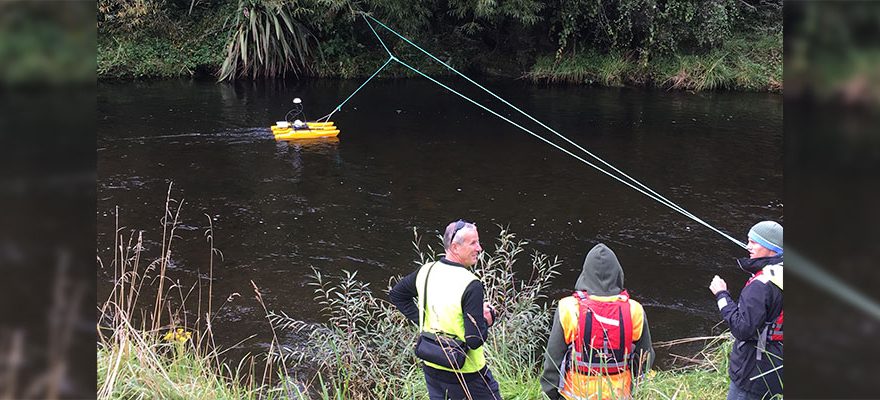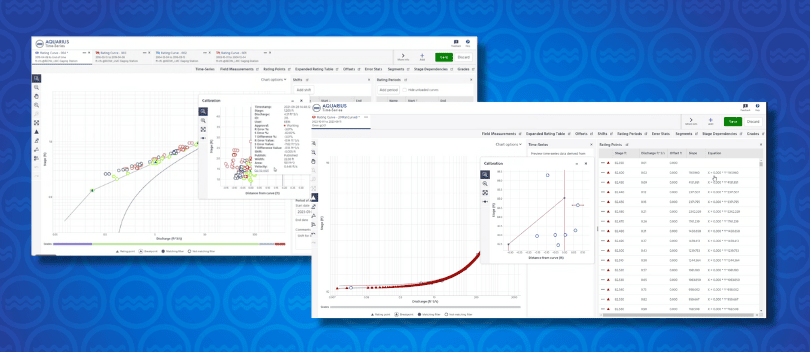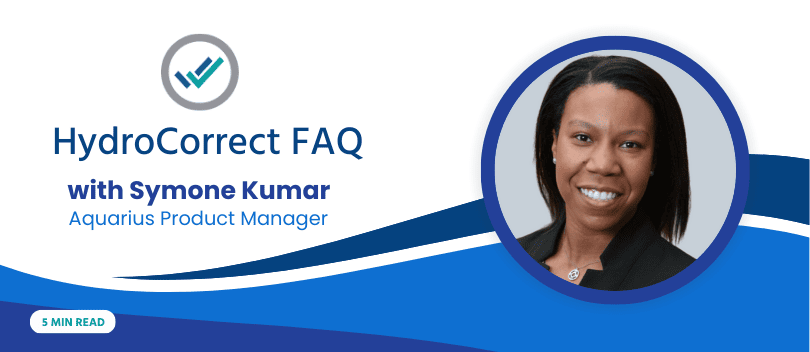
How Good Is Good Enough?
Evan Baddock (left) at the Dunedin flow regatta (Daniel Wagenaar photo).
The New Zealand Hydrological Society hosted an ADCP flow regatta as part of the Technical Workshop in Dunedin from April 3-6. The field event followed a full-day training session presented by Kevin Oberg from the USGS on the use of the QRev program. QRev is the new Acoustic Doppler Current Profiler (ADCP) discharge measurement processing software developed by the USGS Office of Surface Water for standardizing discharge computations and automating the review and quality assurance of ADCP discharge measurements.
A flow regatta is a great opportunity for stream hydrographers to test their skills, build confidence in the accuracy of their equipment, improve their understanding of sources of measurement uncertainty, and learn from others to improve efficiency while maximizing measurement accuracy. This regatta fulfilled all of those objectives.
Take seven minutes out of your day to click on this link and watch the drone video taken of the event. You will be glad you did and disappointed that you don’t have enough money in your training budget for travel to New Zealand.
What you will see is a straight section with uniform flow about 10 m wide, about a meter deep, and a velocity of about 1 m3/s. When I was a young hydrographer in training, we would pull up to a gauge and before getting out of the truck, my boss, Monty Alford, would ask me to estimate the flow. I got pretty good at it but could never match the accuracy with which Monty would guess the flow. For a stream as simple as this, Monty would have been able to accurately guess the flow to within a few percent.
One thing I am sure of is that I could guess the flow more accurately than I could guess the total value of the equipment used for measuring the flow that day.
There were at total of 58 measurements made with a mean of 10.3 m3/s, min of 9.3 and max of 12.05. An initial review of a sample of measurements using QRev indicated that most of the uncertainty came from estimation of discharge in the unmeasured zones. In some cases, the default assumption of the 1/6th power law was not providing a good fit to the measured vertical velocities for estimation of the top and bottom discharges. User acceptance of the default or choosing an alternative model for extrapolation resulted in a fair bit of variation in results. There was also a lot of variability in the estimates of the unmeasured edge sections.
Close attention to best practices are important. Daniel Wagenaar from SonTek recommends that before you start the measurement you do a trial transect where you run the boat hard up against the shore so you can gain valuable insight into the edge sections before setting up your measurement transects. In fact, the USGS techniques manual, Measuring Discharge with Acoustic Doppler Current Profilers from a Moving Boat, lists 9 very good reasons for conducting a trial transect prior to starting the measurement.
However, queues were forming with crews waiting to use the measurement transects. Under this pressure and given how straightforward these transects appeared to be I can understand why some crews may have skipped this part of the protocol. However, it rarely pays to be in a hurry when doing a discharge measurement.
It seems that what is old is new again. Purposeful observations of the river are, apparently, as important as they were in Monty’s day. When you buy a bag of groceries you can estimate how much change you should get and similarly when you do a discharge measurement you should know how much flow you should get, particularly in the estimated regions. Kevin suggests that bed roughness and channel shape provide some indication of the most appropriate extrapolation method. A channel with a narrow aspect ratio is more likely to have a depressed velocity maximum than a wide aspect ratio. Similarly, an upstream wind may also indicate that the max velocity is below the water surface.
Modern hydrographers would do well to spend more time looking at the river. Monty used to be in the field for weeks at a time and the measurement process was so laborious for large, remote rivers that it would often require camping at the gauge. However, the measurement process itself was usually very tranquil allowing for lots of time to internalize the frequency of beeps while observing the patterns of surface turbulence.
The view of the velocity fields from an ADCP provide modern hydrographers with an incredible opportunity to learn how to correlate what they see on the screen with what they see in the river. The kind of insight and understanding of flow that took Monty decades to learn could be achieved much quicker with modern technology. However, in order to gain meaningful insight, modern hydrographers need to do what Monty did a lot of.
Study the river.
It is not enough to simply watch the computer monitor. Better measurements are a result of better judgement. Better judgement comes from experience gained from looking at the river. ADCPs give us a way to ‘see’ velocity fields below the water surface. This is a very powerful tool for developing advanced skill in interpreting what we can see with bare eyes. This is a skill that is important for all measurements, whether using mechanical, acoustic, tracer, or surface velocity technologies.
Run the QRev diagnostics while you are sitting on the river bank. If you find unexpected results there may be measurement error resulting from lack of skill in reading the river. In addition to doing a check measurement, sit on the bank for a while and stare at the river until you notice something that you haven’t noticed before.


